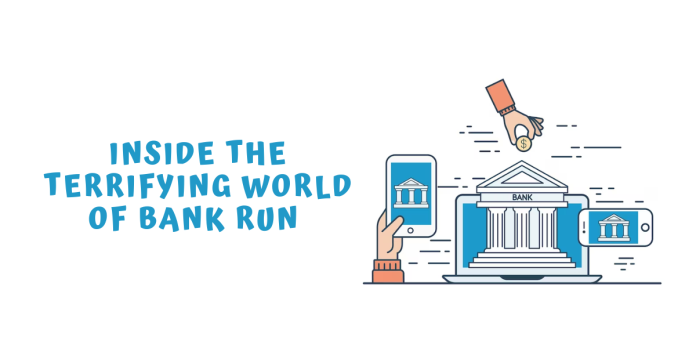Buckle up for a rollercoaster ride through the untold stories of bank runs, where trust crumbles, panic reigns, and fortunes hang in the balance. Your money is at stake – discover the gripping reality behind the term ‘bank run’!
Let’s Explore the inner workings of a bank before getting into bank runs
Banks operate on a fascinating financial principle known as fractional reserve banking, a cornerstone of modern monetary systems.
A Closer Look at the Reserve Ratio
When you deposit Rs 1,000 in Bank A, a specific fraction, known as the reserve ratio, plays a crucial role in determining the bank’s lending capacity.
The Reserve Ratio
Suppose a reserve ratio of 10%. This means Bank A holds Rs 100 in reserve and can lend out Rs 900, setting the stage for financial amplification.
The Money’s Journey: Bank A to Bank B
As the borrower spends the Rs 900, it finds its way to Bank B. Following the same reserve ratio, Bank B keeps Rs 90 in reserve and lends out Rs 810, continuing the cycle.
Calculating Money Creation
By calculating the reciprocal of the reserve ratio (1/0.10), we reveal the money creation factor: 10. This factor signifies how much money can be created from the initial deposit.
Multiplying Wealth: Rs 1,000 to Rs 10,000
In practical terms, if you initially deposited Rs 1,000, the total money created through loans in the banking system becomes Rs 10,000. Witness the tenfold multiplication in action.
Amplifying Impact: Fractional Reserves at Work
In summary, banks leverage the fractional reserve system to amplify the impact of deposits by lending out a significant portion, effectively creating new money in the process.
This system, while complex, showcases the financial intricacies that drive modern banking, influencing economic growth and stability.
What is a Bank Run?
A bank run occurs when a large number of people, driven by fear or a lack of confidence, rush to withdraw their money from a bank. The root cause can vary, but it’s often triggered by rumours, news of financial instability, or a loss of faith in the bank’s ability to honour withdrawals.
The Domino Effect: How It Unfolds
Picture this: one customer, alarmed by a rumour, decides to withdraw their savings. Word spreads like wildfire, and soon a line forms at the bank. More people join, and the rush intensifies. As the line grows, so does the panic. The fear of losing their hard-earned money prompts more depositors to withdraw, creating a domino effect.
Know: Banking Balancing Act
Historical Bank Run Examples
- Great Depression (1930s): The most infamous bank run in history happened during the Great Depression. As the economy crumbled, people rushed to banks to withdraw their savings, leading to widespread collapses.
- Northern Rock (2007): In the wake of the subprime mortgage crisis, Northern Rock, a British bank, faced a run. Faced with overwhelming demand for withdrawals, the bank had to seek emergency funding from the Bank of England.
- Cyprus (2013): The Cypriot financial crisis triggered a run-on bank after a controversial bailout proposal included a tax on bank deposits. Panicked depositors rushed to withdraw their funds before the government could impose the tax.
Psychology of a Bank Run: Fear and Trust
Bank runs are as much about psychology as they are about finance. Trust in the banking system is fragile, and once rumours start swirling, fear takes over. Individuals fear losing their money and rush to secure their financial future, inadvertently contributing to the very collapse they dread.
The Role of Depositor Insurance
To mitigate the risk of bank runs and restore confidence, many countries have implemented deposit insurance schemes. These programs guarantee a certain amount of money (up to a limit) for each depositor, even if the bank fails. The existence of deposit insurance is designed to reassure customers and prevent mass withdrawals during times of uncertainty.
Modern Bank Runs: Digital Age Edition
While the classic image of a bank run involves lines of people outside physical branches, the digital age has brought new dimensions to this phenomenon. In the era of online banking, a bank run can unfold virtually, with customers scrambling to transfer funds electronically. For instance, during times of economic uncertainty, online platforms and mobile apps might experience a surge in activity as users hastily move their money.
Find: Analysis of HDFC Bank’s PAT growth
In the end, a bank run is not just a financial event; it’s a manifestation of collective psychology. It highlights the delicate dance between trust and fear that defines our relationship with the institutions that safeguard our money.


